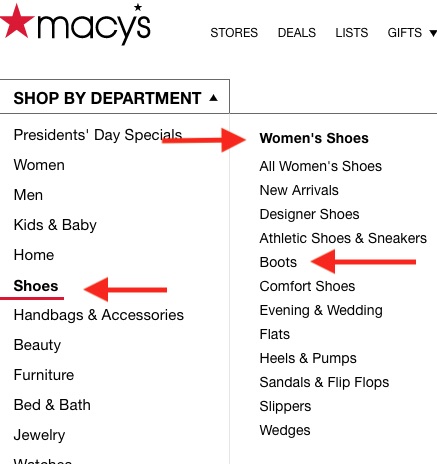Large-scale improvements in organic search performance require large-scale changes. Ecommerce merchants tend to optimize product detail pages. Many merchants overlook category pages, which can provide more organic-search opportunities.
My recent research across roughly 30 leading ecommerce sites, conducted with enterprise platform seoClarity, shows that parent and child category pages rank for 19 percent more keywords than product detail pages alone. What’s more, those parent and child category keywords drive 413 percent more traffic than keywords for product pages alone. And the keywords that category pages rank for have the potential for 32 percent more traffic than those for product pages.
… parent and child category pages rank for 19 percent more keywords than product detail pages… drive 413 percent more traffic … and have the potential for 32 percent more traffic…
Merchants presumably want to prioritize their search-engine-optimization efforts to produce the most reward for the least effort. Thus focusing on category pages is a good place to start.
Category Pages
An ecommerce page template provides the structure and design for displaying products and content. Templates also enforce consistency as a single change affects all pages.
For example, say a fashion site’s category template creates page headings with “Search Results: {Category Name}.” The heading for a women’s shoe page would read “Search Results: Women’s Shoes.” A men’s jeans page would read “Search Results: Men’s Jeans.” Removing “Search Results:” from the template would instantly improve optimization for every category page.
The same goes for title tags, meta descriptions, headings, and alternative attributes to image tags.
You could also optimize headings lower on the page. “Related Products,” for example, could instead read “Related {Category Name}” or “Products Related to {Category Name}.”
Careful use of this strategy can seriously boost organic traffic to category pages. But don’t over-optimize your templates with too many keywords or links. That can be just as damaging as not optimizing at all.
Adding a sentence or two to category pages around a keyword theme can help, too. It’s a manual process — not scalable — but it’s worth the effort in my experience.
Header Navigation
The header navigation appears on every page of your site. The pages in that navigation benefit from internal link authority from every other page on your site. It’s like each page is shouting to the search engines that the linked pages in the header navigation are important.
Does your header navigation link to the pages that you want to rank? Consider linking to the top three levels. For example, in its “Shop by Department” navigation, Macy’s links three levels deep to “Shoes,” “Women’s Shoes,” and “Boots.” It funnels link authority to all of those pages.

Macy’s “Shop by Department” navigation is three levels deep, such as “Shoes,” “Women’s Shoes,” and “Boots.”
Include also critical outliers that don’t typically appear in the header navigation. For example, Macy’s links to a handful of top brands in each major category.
Make sure to optimize the labels for each category in the navigation. A beauty site, for example, might have a default navigational label of “Skin” for skin-care products. Changing that label to “Skin Care” would send stronger relevance and authority signals to search engines.
Balance navigational optimization with user experience. Keep in mind that keyword stuffing and link stuffing will hurt the user experience, which will increase bounces and decrease conversions.
Perhaps most important, make sure that navigation links are coded in a way that search engines will recognize and crawl. Always use an anchor tag with an href, URL, and anchor text, such as:
<a href=“https://www.domain.com/”>This is anchor text.</a>
Single-page SEO?
Scalable SEO enables you to optimize once and benefit many times over. Conversely, single-page optimization is much more laborious — modify a page and wait to see the results.
Both models have their place. But scalable optimization produces the largest gains more quickly. Single-page optimization is essential for the most critical areas — such as your home page and top category pages — and for sitewide fine-tuning once you’ve completed the scalable tactics.





